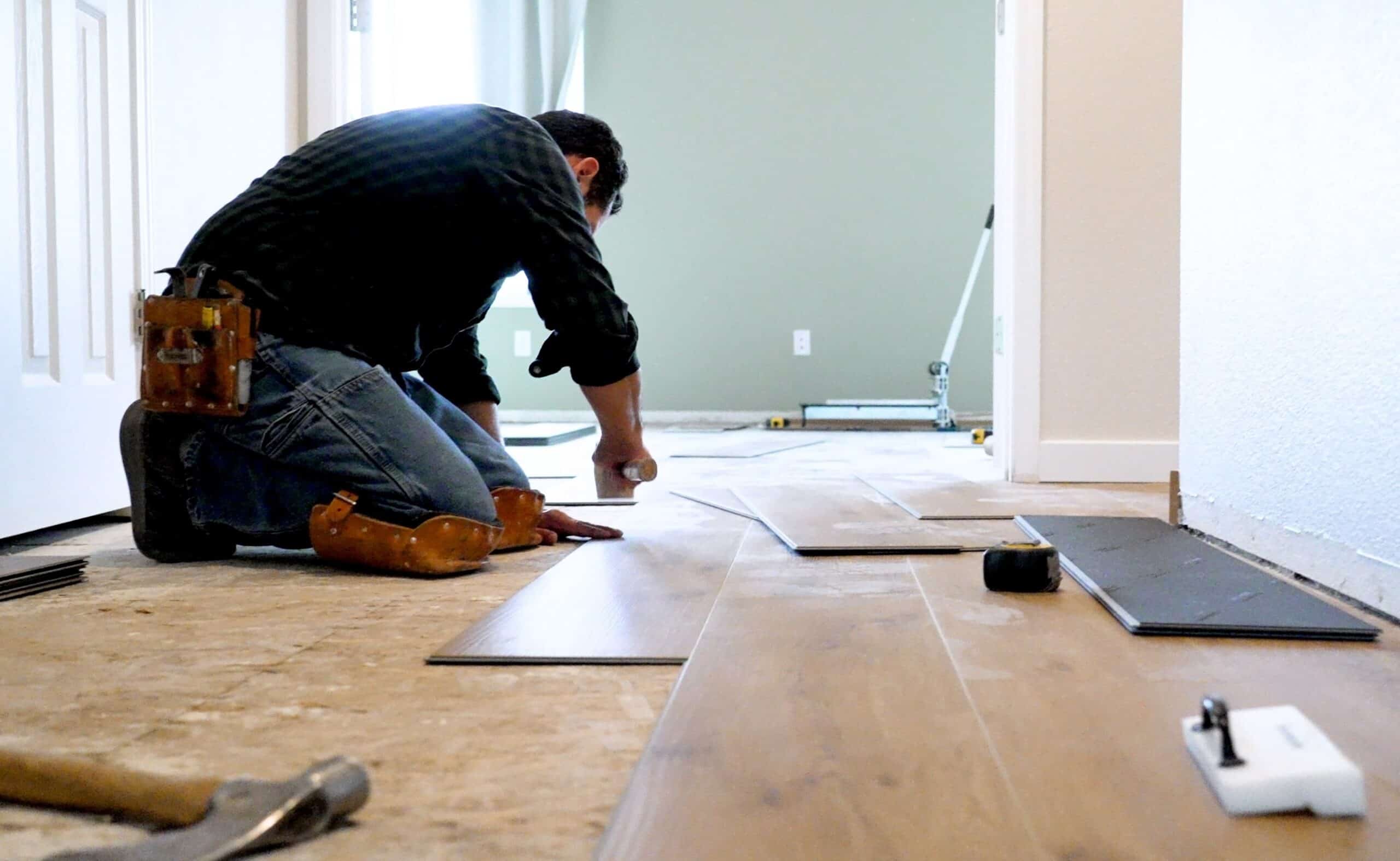Beginning a home renovation can be exciting, but even after careful planning, some things might get overlooked. That’s why working with professionals is such an important part of this process, so they can walk you through more of the “unknown” sides of flooring: like subfloors.
But what is a subfloor? A subfloor is an additional layer of material designed to sit under your main flooring material to offer more support and strength. It can help create even flooring, and it can also help prevent excess moisture and premature aging. There are four main types of subfloors that people should know about before purchasing and installing hardwood flooring: plywood, concrete, OSB (oriented strand board), and particle board. Let us help you do some research on the best option for you before you make a decision.
Plywood Subflooring
Plywood is the most common type of subflooring material and it’s found in most residential homes. People like it because it’s incredibly reliable—meaning it’s consistent and does what it promises to do. Plywood is the best subfloor material if you are installing hardwood floors.
Plywood has a “tongue and groove” type system, which means that one side has a dent or “groove” and the other has a piece that fits securely into the groove, which is referred to as a “tongue.” Two smaller pieces click together to create larger, more secure pieces. Installing is fairly simple and requires nailing and/or stapling your floor onto the plywood subfloor. You can also install subfloors by gluing it down with a strong adhesive, although wood glue and flooring adhesive are not the same thing though so make sure you choose the right product.
Maybe people like plywood subfloors because it’s great on a budget and they can withstand a lot of pressure. However, it’s not the best material if you live in a very hot climate as it can warp overtime. Additionally, it can be pricier than the other options.
Concrete Subflooring
Concrete subfloors are usually found on ground-level flooring and it’s the most durable and strongest subfloor material you’ll find. However, concrete can be susceptible to moisture, which can impact the hardwood floor on top of it. If you live in an area that is prone to heavy moisture levels, this option might not be for you. But, if you’ve tested the moisture levels in your home and find that they’re not high, then you can take advantage of this durable option.
For solid hardwood floors, you can glue them down to the concrete with a strong adhesive. For engineered hardwood or luxury vinyl, you’ll have to use what’s called the “float method.” This method requires you to lay the floor panels onto a padded layer over the concrete. This method is inexpensive and an easy DIY project, however, it can feel hollow and loud when stepped on.
Oriented Strand Board (OSB) Subflooring
OSB is a newer rendition of plywood and is often mistaken for plywood. Some people actually prefer it over plywood because it’s a lot more smooth and it’s cost-effective.
OSB differs from plywood because it’s made of many smaller pieces of hardwood and softwood mixed together in strands. Plywood, on the other hand, is made up of layers of thin wood pressed together. Because the pieces are smaller, the sheets of OSB can be much larger than sheets of plywood, an advantage if you’re working with a larger space. On top of that, OSB can be heavier than plywood and could potentially lay flatter. This type of subfloor is installed the same way as plywood, with nails or staples.
The downside of choosing OSB is that if it gets wet, it takes longer to dry and there is a risk of warping, whereas plywood dries fast and retains its shape.
Particle Board Subflooring
Particle board is made from wood chips, sawdust and resin and is one of the older materials used for subfloors. It’s best for engineered hardwood floors, carpet, or luxury vinyl as it doesn’t hold nails or staples. The best installation method, which was previously mentioned, is called “floating.”
Plywood is incredibly inexpensive and provides a smooth foundation, however, if it gets wet it can warp, disintegrate, or swell. This is the main reason that particle board is not used as much anymore, especially if you live in a climate that is susceptible to flooding. It’s also naturally flaky, so installation or even renovations can be tricky as it easily falls apart. We’ve included particle board here because it has been used a lot in the past and it’s good to understand its pros and cons. Ultimately, you have to choose the material that’s best for you, but our advice is to leave particle board as your last option as it’s pretty unreliable and messy.
Research Before You Choose
The four main types of subflooring all offer their one advantages and disadvantages. They’re not all created equal, and it’s best to do your research before making a decision. Just as you see your new floors as an investment in your home, you want to make sure that you’re viewing your subfloors as an investment. The type of material you choose can have a huge influence on the value of your home and how long you’ll need to wait to do repairs.
If you’re still unsure about which type of subflooring is right for you, reach out to one of our experts. We’ll be happy to guide you in the right direction.


